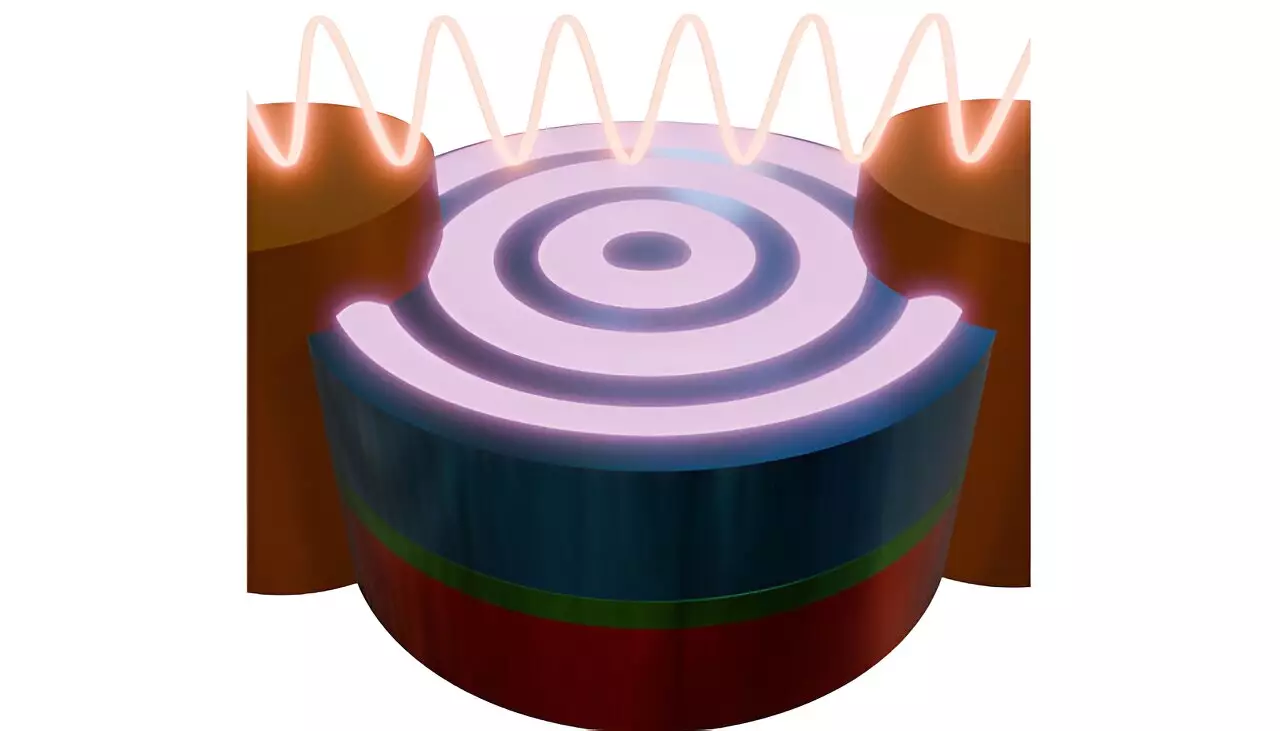In a groundbreaking study, researchers from the University of Vienna, Max Planck Institute for Intelligent Systems, and Helmholtz Centers have made significant strides in the field of computing technology. Published in the journal Science Advances, the study investigates innovative approaches to miniaturize computing devices and enhance their energy efficiency. The focus centers on the use of magnons, which are the quanta of spin waves, promising a transformative leap in the architecture of modern computing.
Traditional computing devices, such as laptops and smartphones, rely heavily on silicon-based transistors influenced by complementary metal oxide semiconductor (CMOS) technology. As the demand for smaller and more efficient devices grows, scientists face numerous challenges, including limitations inherent in current technologies and sustainability concerns. The relentless power consumption, coupled with substantial energy losses in traditional systems, has pushed researchers to explore viable alternatives that maintain performance while minimizing environmental impacts.
The Role of Spin Waves
The central concept of the study revolves around spin waves, which can be likened to ripples created when a stone is tossed into a lake. Instead of water, this study substitutes with magnetic materials and the “stone” becomes an antenna generating spin waves. These waves can efficiently transmit information and energy across electronic systems with minimal losses, signifying a leap toward more sustainable computing.
According to Sabri Koraltan from the University of Vienna, who spearheaded the research, “The potential applications for spin waves in computational tasks are immense.” Unlike traditional methods, the researchers have unlocked ways to not only generate these spin waves more efficiently but also direct them on-demand through innovative frontend designs. This breakthrough might pave the way for creating reprogrammable circuits that adapt to various computational needs without incurring excessive resource costs.
Simplifying Fabrication Processes
Traditionally, generating short-wavelength spin waves has posed significant challenges, primarily due to the lack of efficient production methods available through nano antennas confined to specialized clean rooms. Researchers faced obstacles in leveraging the full potential of spin waves due to inherent limitations in existing fabrication techniques.
However, the team has devised a simpler fabrication method that eliminates the need for complex nano antennas. By enabling electric currents to flow through a magnetic stack featuring intricate swirling magnetic patterns, they have significantly improved the efficiency of spin-wave emission. As Sebastian Wintz notes, this novel approach allows for spin waves to be generated with an intensity that eclipses traditional techniques.
Utilizing high-resolution tools such as the “Maxymus” X-ray microscope at the BESSY II synchrotron has allowed researchers to visualize and confirm the existence of these newly predicted spin waves. The work addresses the need for comprehensive technological advancements by revealing that alternative materials can adjust their magnetization via applied strain, granting even finer control over the propagation direction of spin waves.
The implications of such technological evolution stretch far beyond immediate computing applications. The ability to redirect spin waves opens new avenues for adaptable magnonic circuits, promising efficiency and flexibility in computing systems. As Dieter Süß highlights, the new micromagnetic simulation software developed for these experiments was instrumental in simulating large-scale processes—critical for advancing theoretical understanding and practical realization of these spin-wave systems.
The discoveries encapsulated in this research reflect a significant leap toward post-silicon computing technology that heralds a new era of energy-efficient devices harnessing the properties of magnons. These advancements not only contribute to sustainable technology solutions but also position the field of computing at the cusp of unprecedented innovation.
As the world continues to grapple with the implications of electronic waste and energy consumption, exploring the reprogrammable nature of magnonic circuits may prove to be a pivotal step towards less resource-intensive computing architectures. Each revelation from this study lays the groundwork for what could become a narrative of change, steering the future of computing towards greater sustainability and adaptability in the face of ever-growing digital demands.

